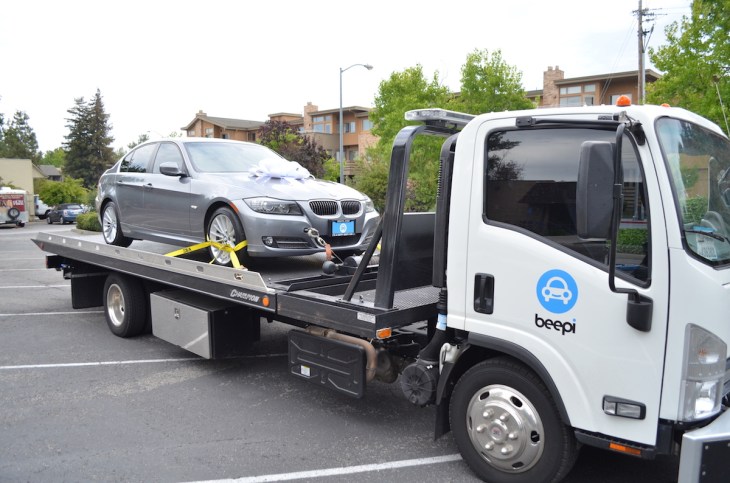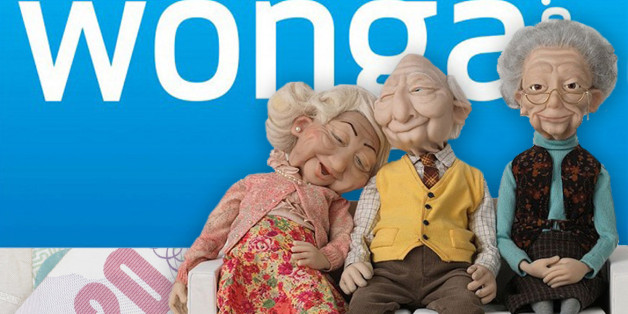Every failure has a lesson to teach
Sometimes all you need to become a success is to fail first. There are numerous examples around us. LinkedIn co-founder Reid Hoffman first started a social networking platform called SocialNet that failed. However, he attributes the success of LinkedIn, which raked in $1 billion in revenue in 2017, to his failure with his earlier startup.
If you are thinking about creating your own startup, you first need to look around. The failure rate for startups is too high. That should not discourage you but give you more opportunities to learn before stepping on the ground. You will probably still make mistakes but studying other people’s experiences will save you from repeating their mistakes.
Here are nine notable startup and product failures you should know about:
1. Beepi

Beepi.com looked like a promising venture on paper. The used car selling and buying marketplace was released at a time when such online marketplaces had a lot of potentials. They even managed to get $60 million Series B funding round.
It finally shut down in 2017 after being in business for over four years. The used car dealer DGDG tried to buy the startup but pulled out eventually.
What went wrong?
Beepi was a classic example of bad leadership and management. Some would say they went too big too soon. The founders were able to quickly raise a lot of money but did not spend it carefully. Apparently, the company was burning through $7 million monthly at one point just paying salaries which included very high salaries for top executives.
What lesson should you learn?
Money runs out eventually if you do not spend it carefully. Time and again, startups have failed because of running out money. For many it is simply bad luck, however, in the case of Beepi, it was bad management.
2. Google Glass

Google is one of the biggest companies in the world but it has its fair share of failures as well. Google Glass was a futuristic smart device by Google that brought a new twist to wearable technology. Even after much hype, it failed immediately.
What went wrong?
Perhaps it was a bit ahead of the time or it raised privacy concerns. Most importantly, it was super expensive for the masses. It just failed to connect with the consumers who did not see a much value in it.
What lesson should you learn?
Innovation is great as long as it benefits the consumers. Also, you have to do anything and everything including cutting costs to bring the price down if you want to sell your product. You need to set up a smart marketing strategy where you can offer discounts in a way that it benefits you as well as your customers.
Also read: 5 lessons I learned from a startup failure
3. Jawbone

When talking about failed startups, nothing could be of a bigger scale than the consumer electronics company Jawbone. It produced products like headsets, Bluetooth speakers, and fitness trackers. It raised over $930 million as a venture-backed startup. VC companies like Sequoia, Khosla Ventures, and Andreessen Horowitz invested millions in the company but it failed in 2017 and announced liquidation of its assets.
What went wrong?
Experts say that overfunding killed this startup. They artificially increased its valuation and the company was almost force-fed with funding. Their wearable technology failed to compete with the industry leaders Fitbit and Samsung. The company became only the second biggest VC backed startup failure according to CB Insights.
What lesson should you learn?
Too much money is not good either, especially if the future of the product is uncertain.
4. Yik Yak

When Yik Yak, an anonymous chatting app, was first released it became an immediate success. This was back in 2013 when the smartphone boom was happening and innovative apps were coming out. It became very popular among college students. However, it starting losing following after Snapchat came out.
There were many controversies as well involving cyberbullying and harassment. It peaked at $400 million. Then in 2017, it closed its doors when no one even knew about it anymore.
What went wrong?
Yik Yak picked up on a trend and could not live up to changing expectations and dynamics. Somehow, it lost its appeal and sound among myriads of other chatting and dating apps (Tinder, Grindr, and Snapchat).
What lesson should you learn?
Your startup idea needs to be pivoted towards a long-term solution and not just current trends. Also, adapting and changing is survival in the cut-throat world of digital startups.
5. Canadadrugs.com

CanadaDrugs.com started as a viable solution to providing simple mail order medications to millions of patients across the country. Before it could even test the time for success, they were shut down by authorities and left with a long legal battle.
What went wrong?
This company made a grave mistake of misleading the customers about FDA approvals. It was selling drugs saying they were being manufactured in FDA approved facilities. However, the truth was that they did not know where it was being made. The US federal prosecutors accused the people behind the company of illegally importing and selling misbranded and unapproved drugs.
What lesson should you learn?
Never ever cheat your customers and risk their lives. Not only is it unethical but can send you to prison.
Also read: Unfazed by 3 failures, this 20-year-old is building a new startup, with some big names backing it
6. Doppler Labs

Doppler Labs flagship product was the Here One, wireless earphone and microphone. It stayed in business for four years and raised a whopping $51.1 million. When the product came out, Doppler Labs anticipated sales of 100,000 Here One but only a dismal quarter of that actually sold.
What went wrong?
Doppler Lab ended because of faults in their product and their delayed release. First of all, few manufacturing problems delayed release which made them miss out on crucial holiday season sales. Secondly, when customers used the product, they found out that it only lasted about two hours on full charge.
What lesson should you learn?
Do not create a product you cannot sell. Also, there is too much competition and high-standards to face when it comes to producing hardware.
7. Wonga

The UK-based company Wonga has a somewhat typical story of the rise and fall of a company. It was a unique idea backed by private equity investors. It was a payday lender giving short-term credit at high interest. It was going well until it was not. Turns out people were struggling to pay back the money. The situation got so bad that it got a £10 million injection.
What went wrong?
The company started making good money but it soon became clear at what cost. When stories emerged about people struggling to pay back the credit, authorities started regulating the company. They also admitted that they were lending money to borrowers who could not pay back. Then there were too many complaints whose compensation was costing Wonga on average £550.
What lesson should you learn?
Profitability is important but do not get greedy.
8. Juicero

Juicero’s failure can only be described in one word: epic. The company started crowdfunding in 2013 but the product did not come out until 2016. And when it did it was an immediate bust thanks in part to a lot of negative press. The founder promised a high-end luxury juice machine that was much more than a juicer. The company raised a whopping $118.5 million.
Also read: Why failing your startup does not mean you are a failure
What went wrong?
When the machine was actually released, it used proprietary juice packs to squeeze the juice. The machine basically just squeezed juice out of the packets. Obviously, $699 was too much for such a thing.
What lesson should you learn?
Entrepreneurship is about solving problems not reinventing the wheel or in the case of Juicero, breaking the wheel.
9. MyBizHomePage
Founded by a serial entrepreneur, Peter Justen, the site worked with QuickBooks software to help companies keep a track of their finances. It was started in 2006 and became a quick success. At one point, the company was valued at $100 million. However, the company drowned when its site’s security was compromised.
What went wrong?
Founder Peter Justen did not want to sell the business and had issues with the company’s Chief Technology Officer. After the CTO was fired, the website suffered multiple attacks and crashed. The backup data was compromised and the site had to be shutdown.
What lesson should you learn?
Web security is extremely important. And so is working with people you can trust.
The Bottom Line
The bottom line is that every failure has a lesson to teach. And it is better to learn from other people’s mistakes than your own. Startups face an incredible amount of challenges and there is no magic formula for success. However, you can improve your chances by avoiding the obvious pitfalls.
It is quite clear from the examples above that even if you find investors and get all the funding you need, you might still fail. It is an ever changing world and you need to stay at the top of your game no matter what.
—-
e27 publishes relevant guest contributions from the community. Share your honest opinions and expert knowledge by submitting your content here.
Photo by Austin Neill on Unsplash
The post These 9 famous startup failures have a lesson for you appeared first on e27.
